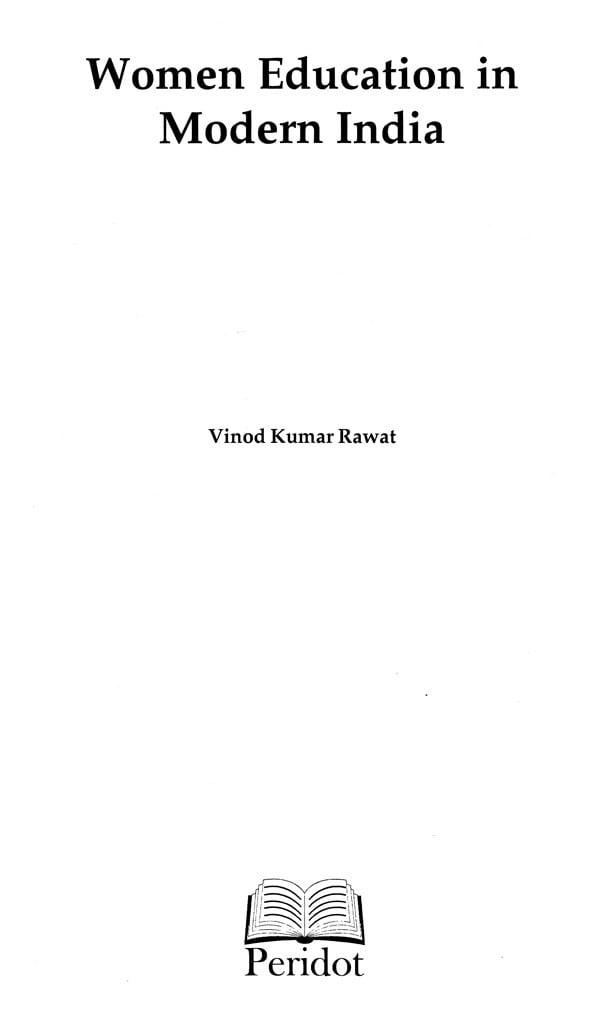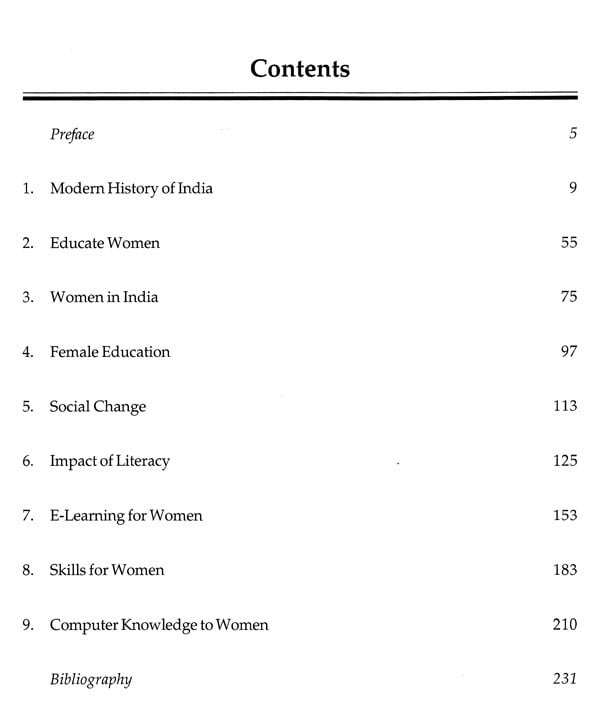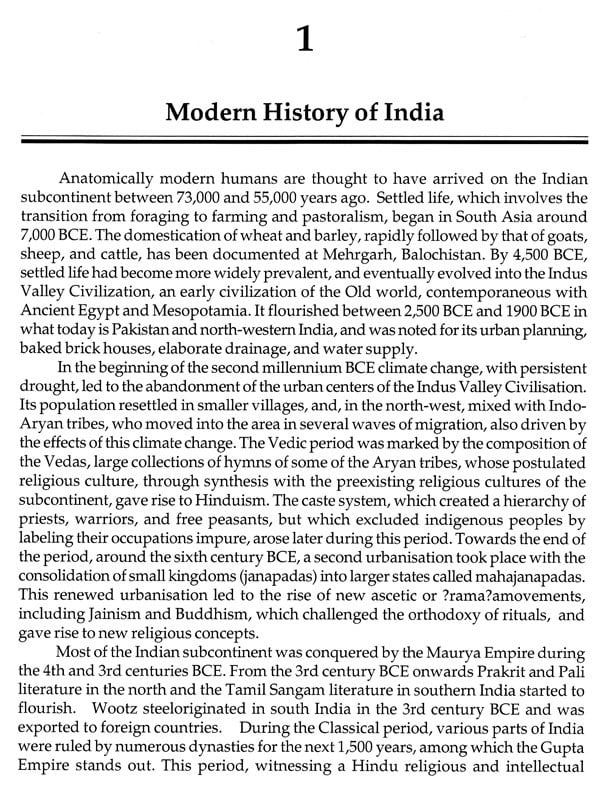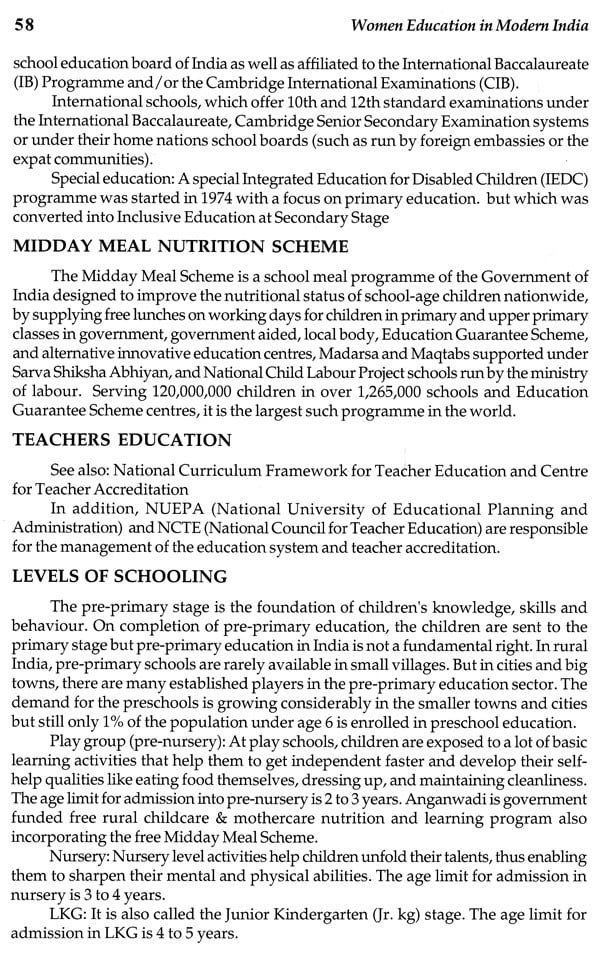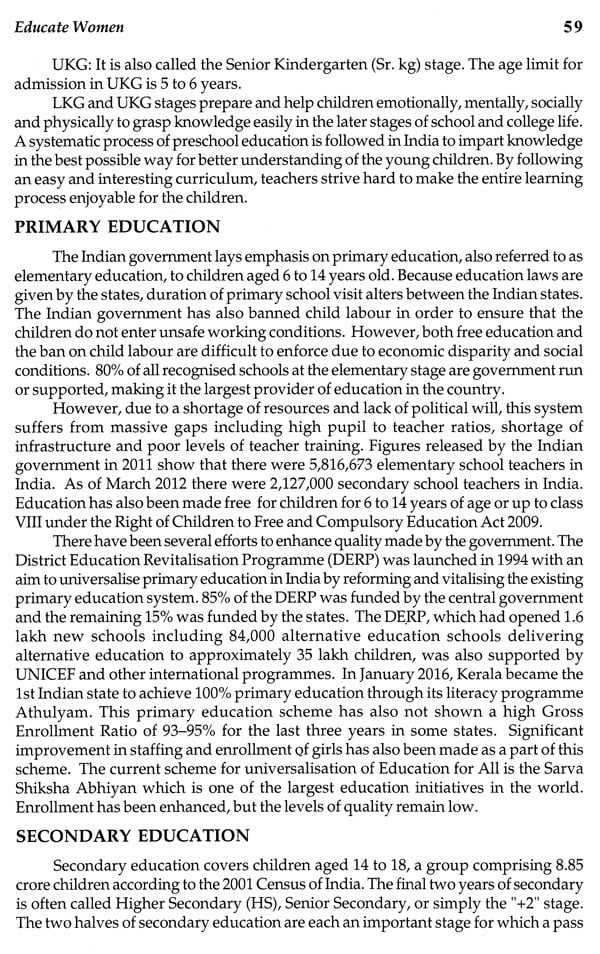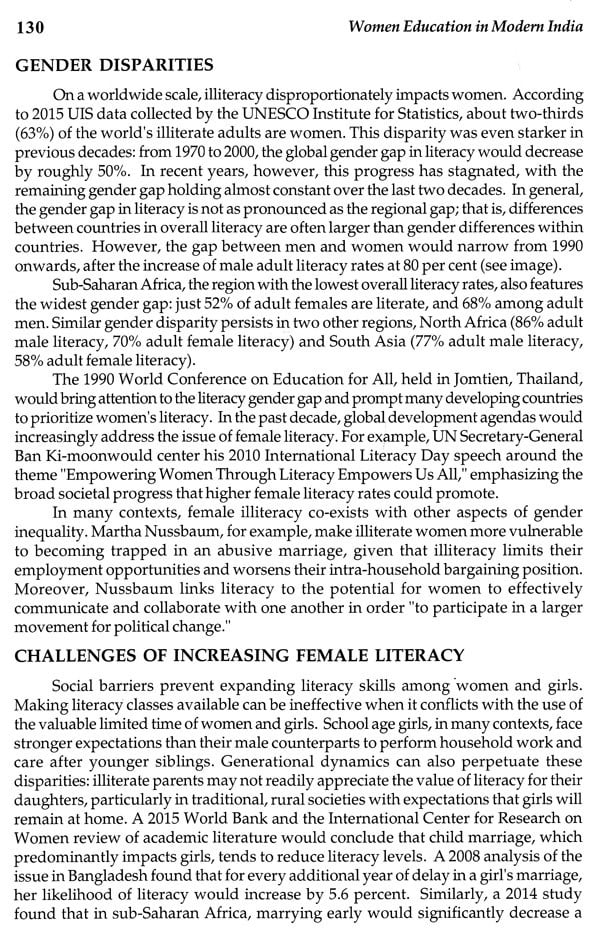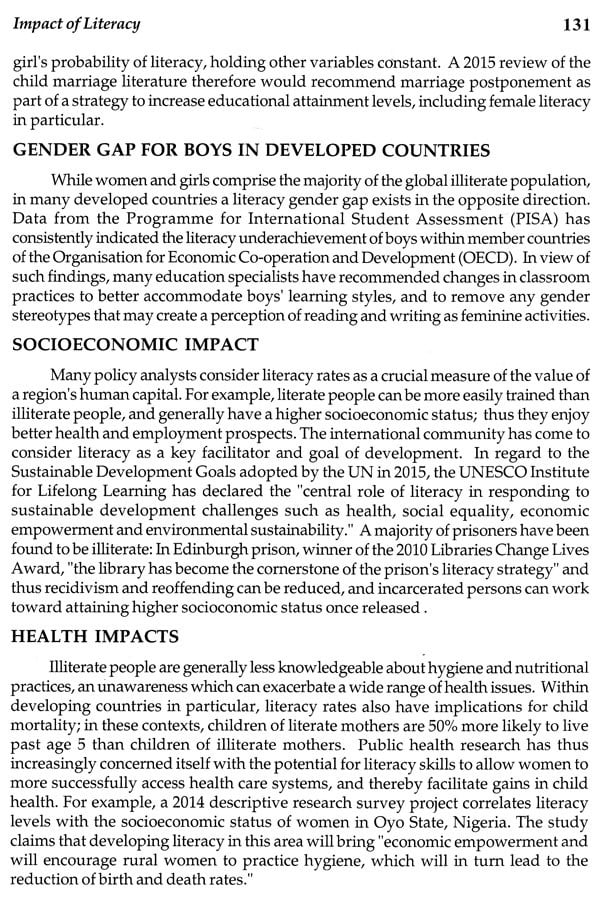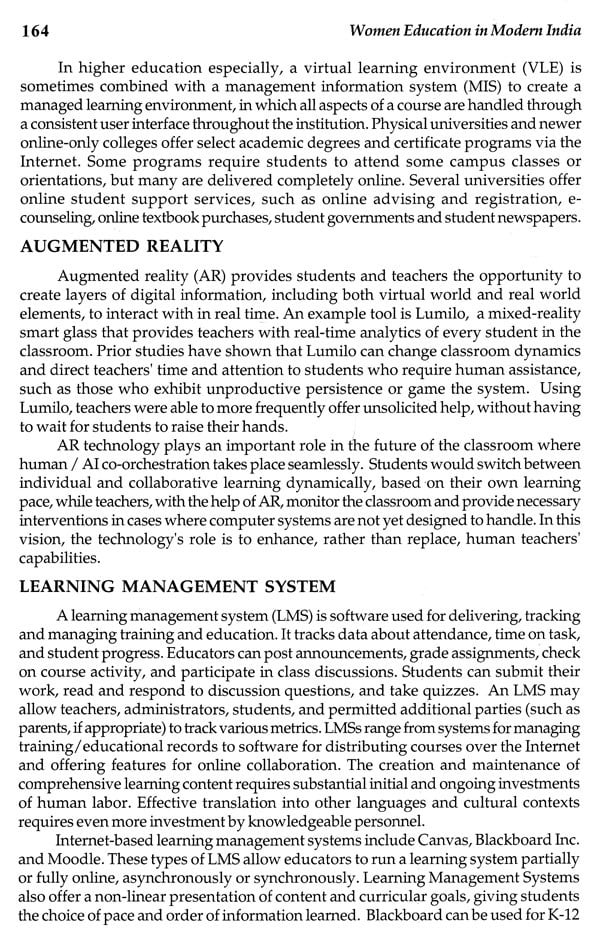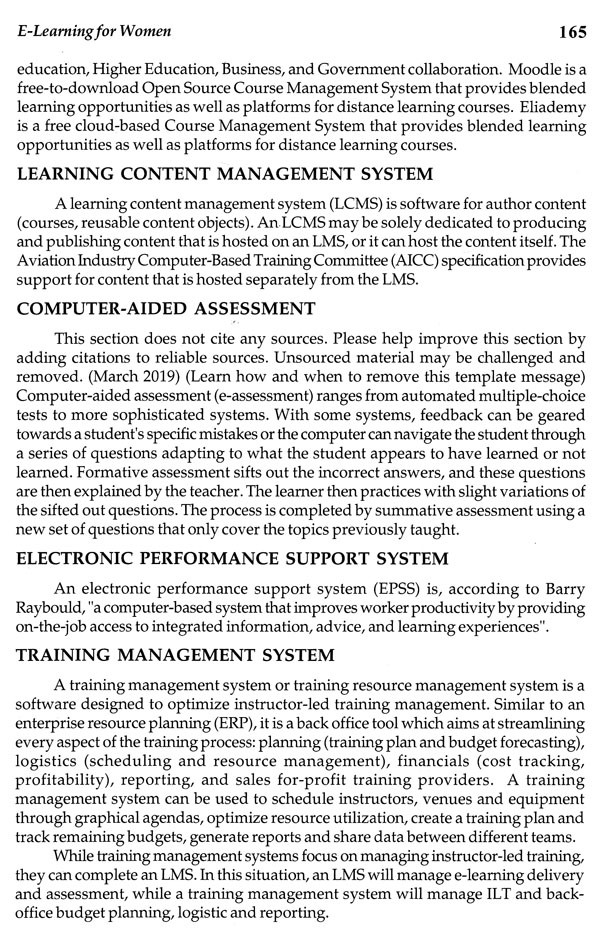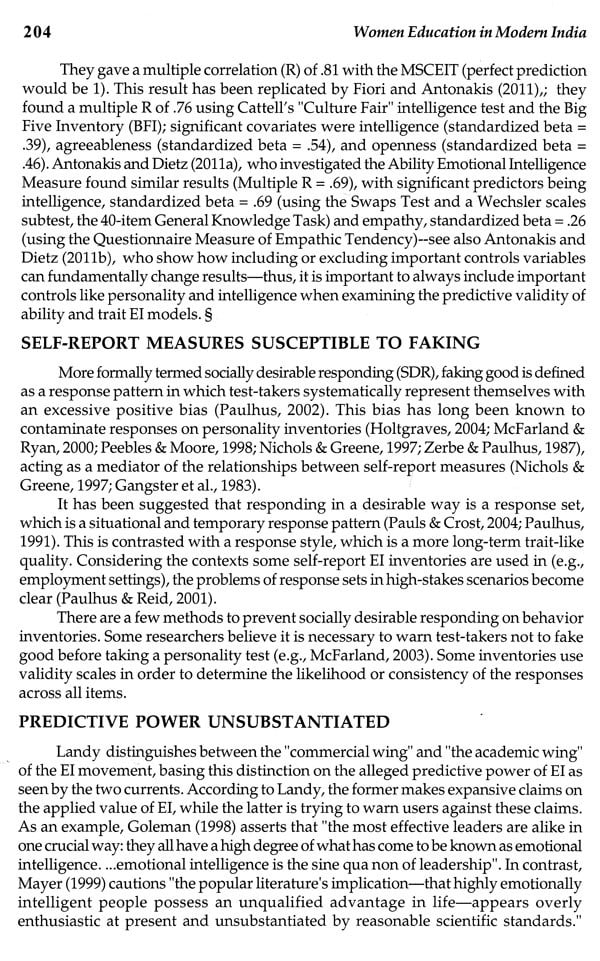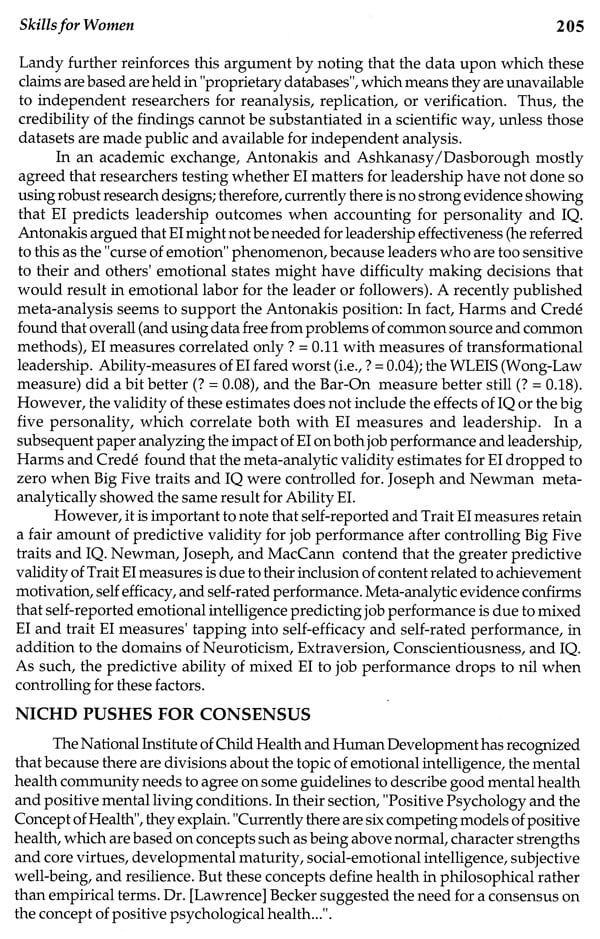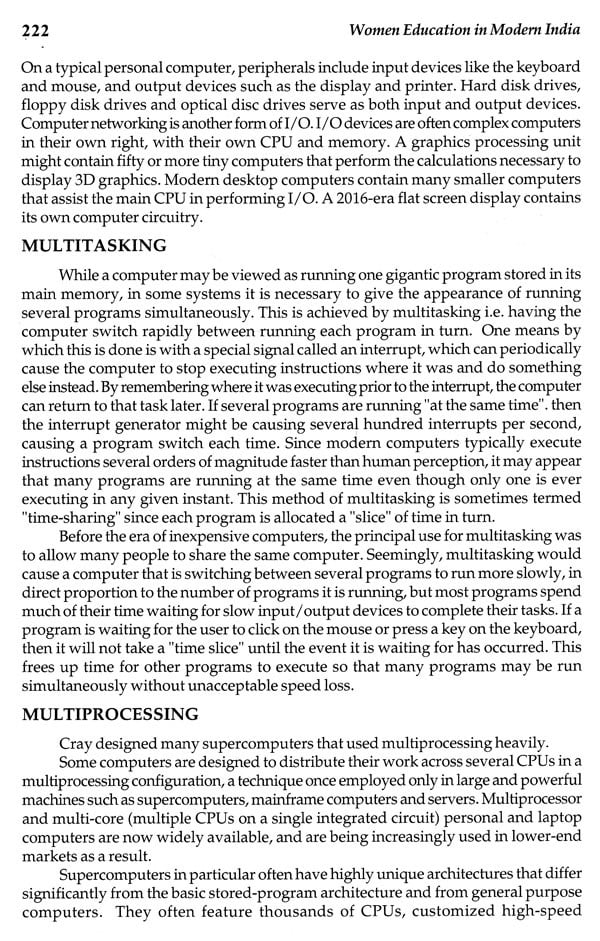
Women Education in Modern India
Book Specification
| Item Code: | UAR495 |
| Author: | Vinod Kumar Rawat |
| Publisher: | Peridot Literary Books |
| Language: | English |
| Edition: | 2019 |
| ISBN: | 9789389404555 |
| Pages: | 232 |
| Cover: | HARDCOVER |
| Other Details | 9.50 X 6.50 inch |
| Weight | 480 gm |
Book Description
It is a well known fact that most Indian families spend more on their daughter's wedding when compared to her education. And the daughters-in-law are mostly expected to take care of the family rather than continuing their studies or having a steady career. Because of this reason, women are said to have jobs and not careers! We live in a society where the upbringing of children still depends largely on the mother. What good are we going to pass on to the next generation if that mother is illiterate? The chances are that her own daughter might become an illiterate mother one day, thus continuing the vicious cycle. The common perception is that the girls of the family will get married one day and would not contribute to the financial needs of the family. But what we are not able to understand is that the upbringing and empowerment of future generations is left to illiterate mothers. This is like a chain reaction wherein the next generation of daughters, mostly from the rural areas, are treated the same. In a poverty stricken family, every hard earned rupee would be spent on the needs and education of the son without any questions.
Vinod Kumar Rawat is Associate Fellow Varanasi. He has a PhD from Banaras Hindu University, Varanasi, with specialization in Women empowerment. He has published many articles in journals and chapters in books. His main research areas are urbanization, poverty, health, social exclusion and social protection programmes.
Modern age was the time of reformation in India as well as in the whole world. After the Mughals invaded India, the British entered the country with an aim to spread their statute in the whole subcontinent. The British brought with them many new ideas and enlightened the Indians. The status of women in modern India is subjected to inconsistency. The Indian women in modern period outshine in certain areas whereas on the other hand she has to suffer the violence of the men dominated society. The condition of Indian women developed in the colonial period. After inde pendence the scope for women increased and Women Education in Modern India widened. In India the educational system was modified and three-tier instruction process was developed. All citizens of India are offered the right to education and Women Education in Modern India was opened to a new vista. The structure of Indian education system came into being. Two important structures came into being: formal and Non-Formal Education programme. Various other educational programmes such as online education and distance education were also launched. The main aim of all the educational programmes is to make every girl child of the society literate.
At present, Women Education in Modern India has achieved a new height. Currently, entrance of women in engineering, medical and other professional col leges is overwhelmingly elevated. Most of the professional colleges in the country keep thirty percent of the seats reserved for females. In urban India, girls are opened to a far wider scope then the rural girls. In cultural reality, the women enjoyed a privileged position in the Vedic period.
The women had special customs, rituals and spirituality, with which men were not allowed to interfere. In medieval period though women had to suffer because of various foreign interferences, yet in modern times the condition of women developed gradually. Moreover, Women Education in Modern India increased the intellectuality of the Indian women. Indian history produces famous women saints, healers and priests. For instance Andal, a 6th century A.D. sage and Jnanananda Ma of the 20th century have contributed to the society. In both villages and cities there has been a remarkable increase in the number of women going out of the four walls of the house hold and becoming workers. In the employment market they are successfully competition with the men folk, In every field, the number of women employees is steadily. increasing since 1991, though in a smaller number, women are getting recruited into the Army force, Air force and Naval force also.
Employment has given women economic independence and the feeling of importance. They now feel that they can stand on their own and look after the entire family by themselves. This has boosted their self-pride and self confidence. Employment provision has made them to feel that they need not live as parasites on their men folk. In order to give protection to the economic interests and rights of the women folk the government has undertaken various socio economic legislations, which cover areas such as rights to property or inheritance, equal wages, working conditions, maternity benefit and job security.
**Contents and Sample Pages**
